Also published at Shapeways Magazine
—–
It makes perfect sense that you can make your 3D prints cheaper by scaling them down to a smaller size. But, did you know that sometimes you can make your prints cheaper by making them… bigger??

Scale, Volume, and Space
There are three ways of measuring “size” that are important when printing with Strong & Flexible nylon plastic at Shapeways: Scale, Volume, and Space. When you change a model’s Scale in Shapeways, you are changing its linear measurements, or how far across the model spans each of the x, y, and z directions (if you’re unfamiliar with those concepts, you can think of x, y, and z as its height, width, and depth). Because changing Scale affects all three of those directions, every change in Scale causes approximately that change in Volume cubed. For example, if you Scale to 80% of an object’s linear size, it causes the Volume of that object to shrink to nearly 50%. (Here’s the math: 0.8 * 0.8 * 0.8 = 0.512.)
However, when printing with Strong & Flexible nylon plastic, you have to consider not only Volume, but also Machine Space. At first glance, these two things sound the same, but they aren’t. Volume measures how much printing material is needed for your object, while Machine Space measures how much room your object takes up in the printer. Larger volumes do tend to take up more space, but Machine Space also considers how well your object packs with other objects being created in the same print job. Shapeways is very good at packing objects together for printing, and measures closely around each object to see how well it will pack with other objects.

Sometimes, this means that Shapeways will print other models inside of yours. After printing, they just shake out the other objects and separate them (see this video for details). That’s what we’ll be taking advantage of in the following examples.
Scale up to price down
Let’s use the Rhombic Dodecahedron Menger Frame from our geekhaus shop as an example.

The original size of this model was about 14 cm across. That means that it would have cost $150 to print in Red Strong & Flexible Polished Nylon. (Here’s the math: $2.50 for one part + ($0.28 material charge)*(196 cm^3 volume) + ($0.21 machine charge)*(439 cm^3 machine space = about $150.)
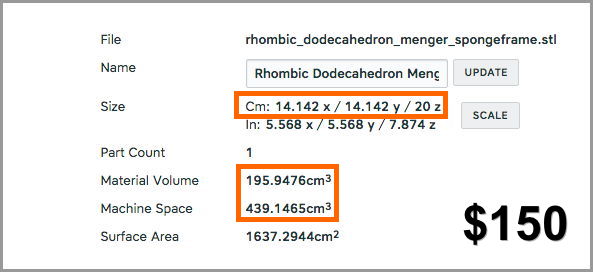
By decreasing the Scale by half, to about 7 cm across, we can decrease the Volume by a factor of eight. Notice that the 195 cm^3 Volume has decreased to about an eighth of that, to just 24 cm^3. This drops the price of the model significantly to about $66.
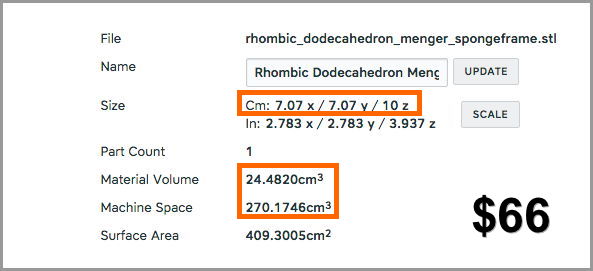
However, at this size, the holes of the model are too small for Shapeways to pack anything inside it, so we are taking a hit on Machine Space. And, here’s the crazy part: by increasing the size of the model, we make the holes bigger, and decrease the Machine Space — enough to bring down the price of the model even further!
Here, we bring the model up to about 8.5 cm across and end up saving $23:
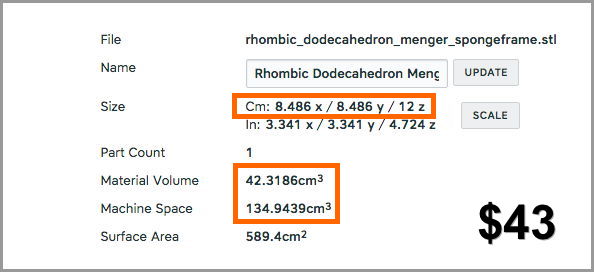
Visualizing Machine Space
As another example, let’s look at the Dodecahedron Porthole Wireframe model from the same shop, where the holes are more clearly defined.

According to the Shapeways article Design for Low Cost 3D Printing, the holes in your object must be at least 4o mm across in order for Shapeways to pack things inside when printing. However, we’ve found that they can be significantly smaller than that. To visualize how much Machine Space your object will take up, upload your model and then click on the View 3D Tools button under the name of the material you want to use. For a 4 cm version of our model, the machine space looked like this, with all holes closed and the inside of the model inaccessible:

Bumping up the diameter by just one centimeter opens up the holes (as shown in the Machine Space visualization below). The entire object is now about 5 cm in diameter, and its holes are only about 2.5 cm in diameter. Note that opening up this Machine Space dropped the price from $8.75 for the smaller 4 cm version to $5.12 for the slightly larger 5 cm version.
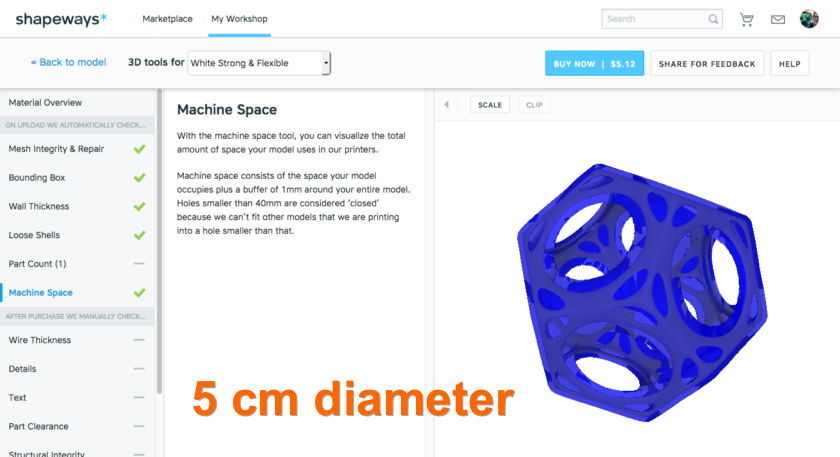
Okay, that’s your paradoxical design trick for today! Sometimes you’ve gotta get up to get down. Optimize your own Strong & Flexible nylon plastic models by paying attention to Machine Space, and let us know in the comments if you have any questions or advice to share.
——————
As an Amazon Associate we earn from qualifying purchases, so if you’ve got something you need to pick up anyway, going to Amazon through this link will help us keep Hacktastic running. Thanks! :)

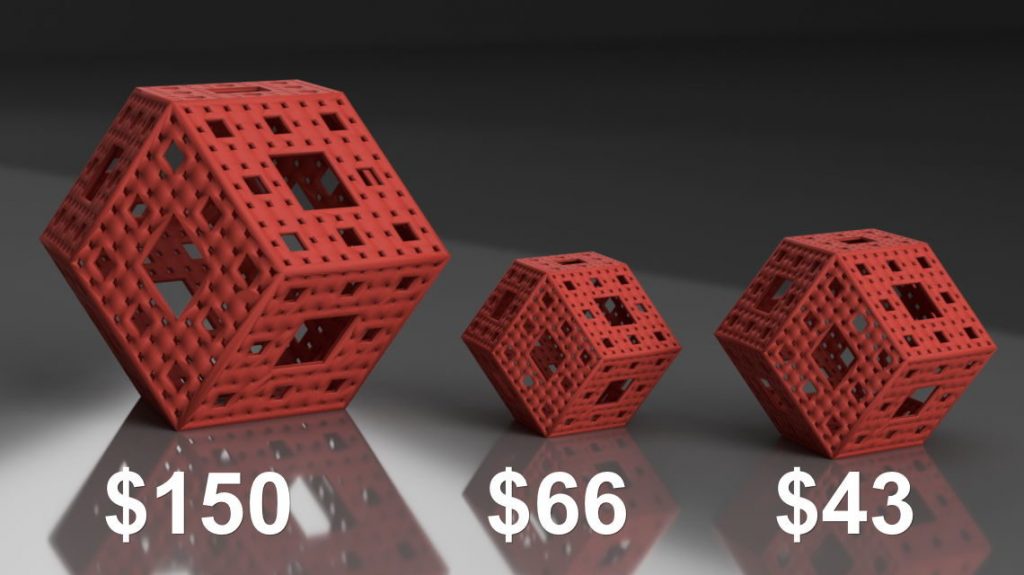
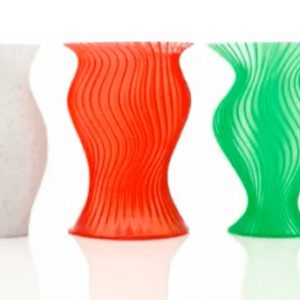
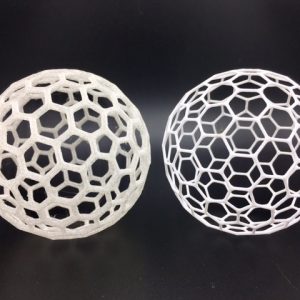
Leave a Reply